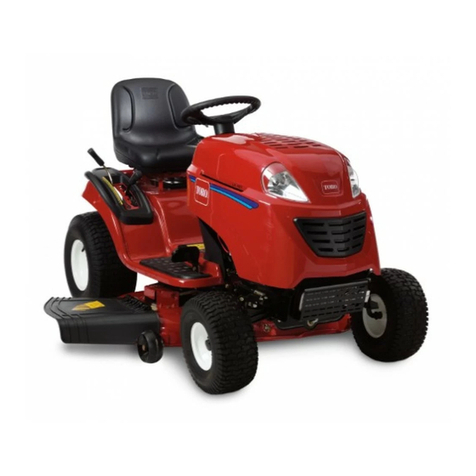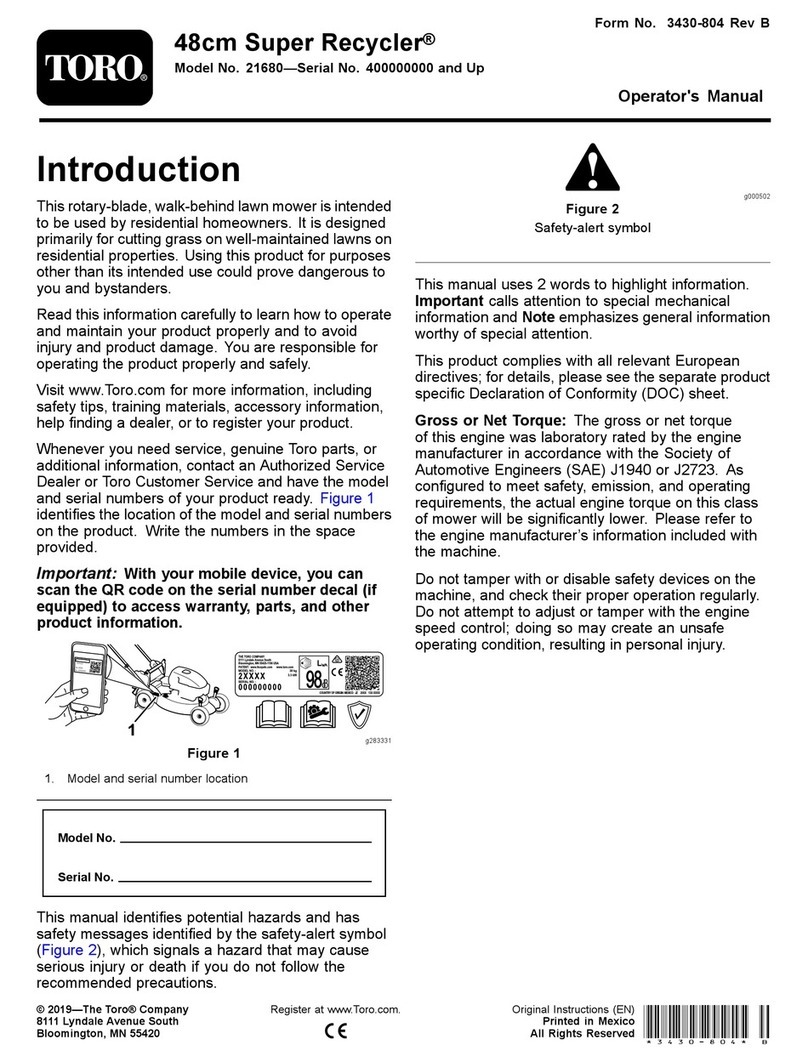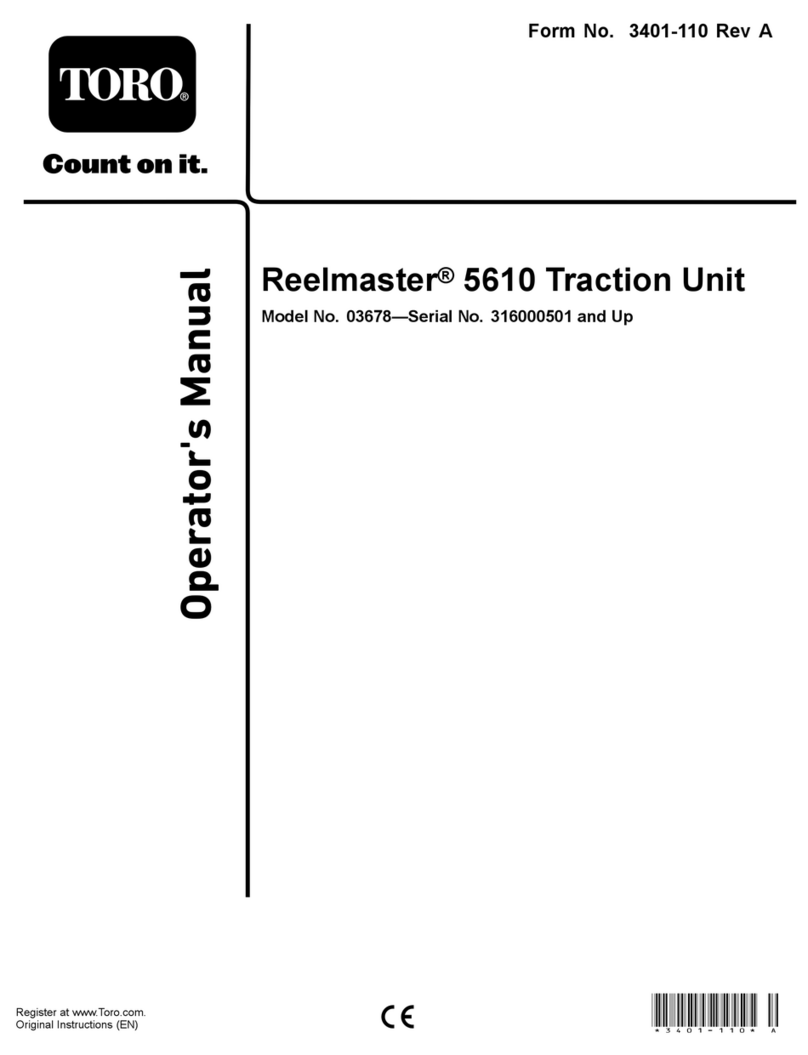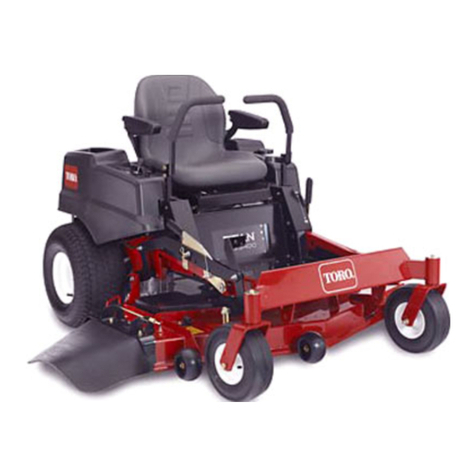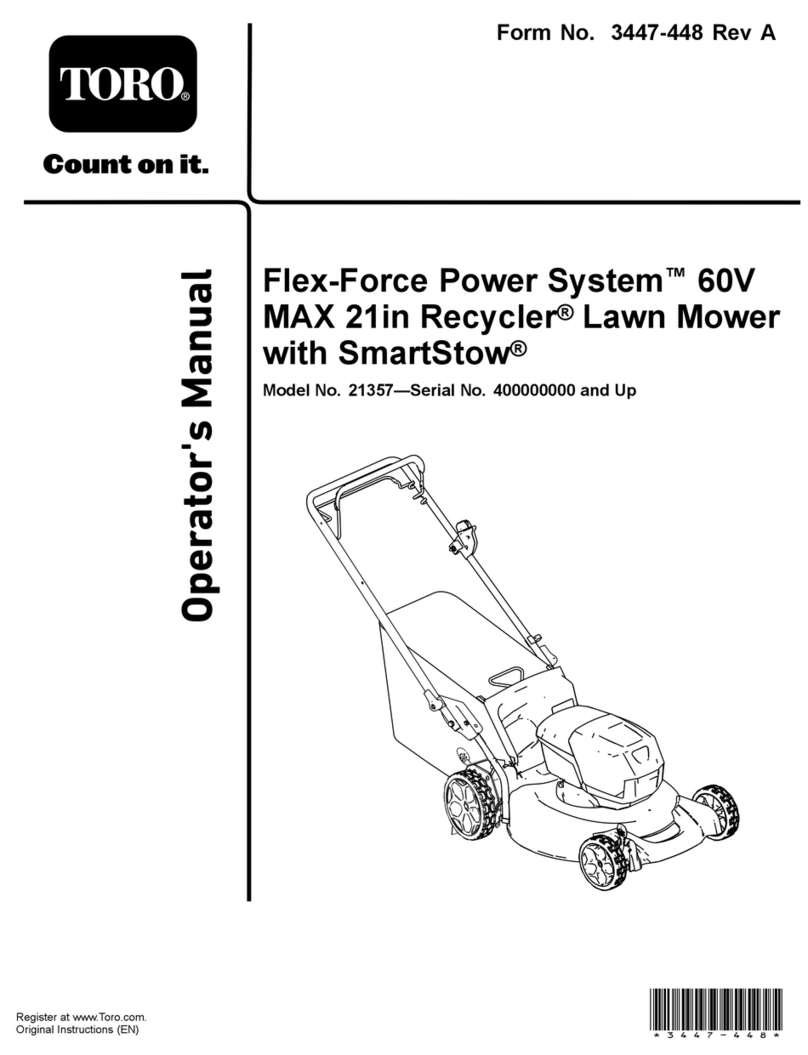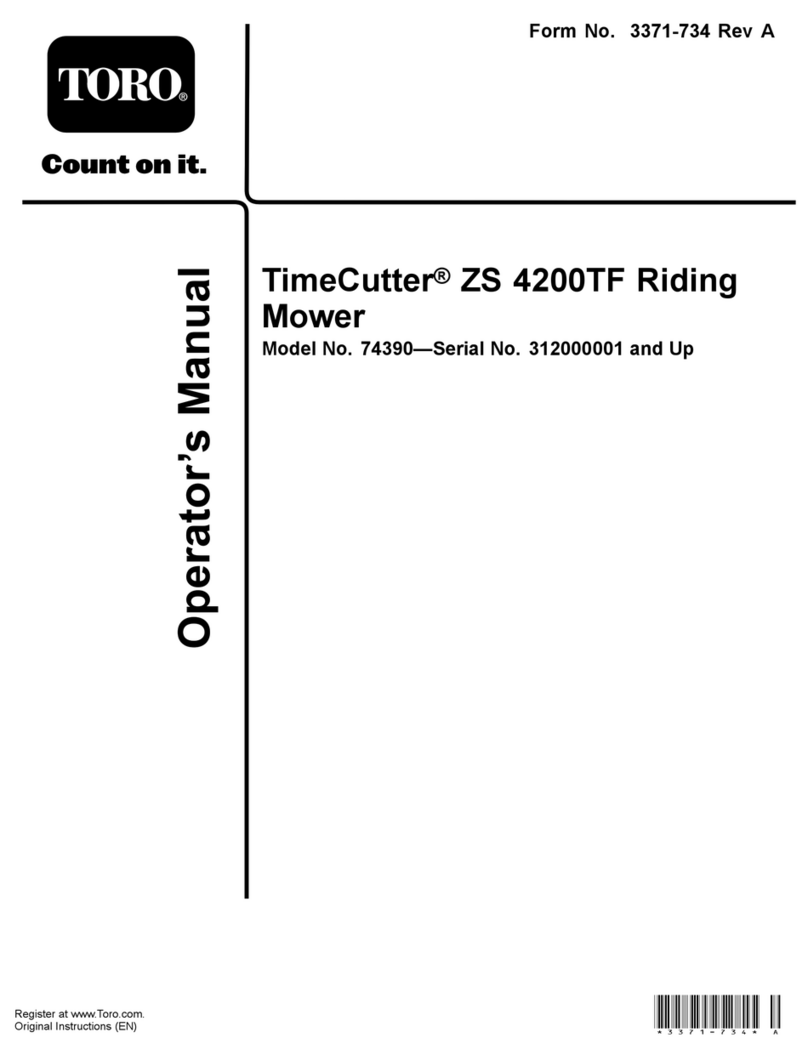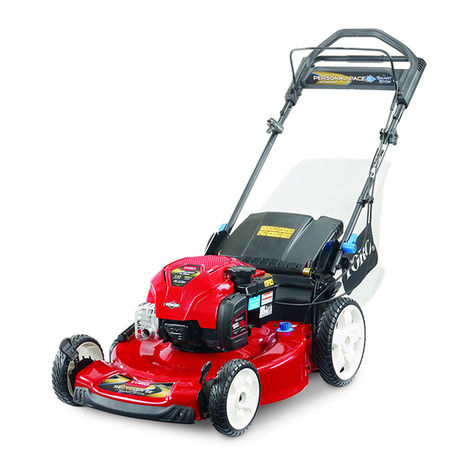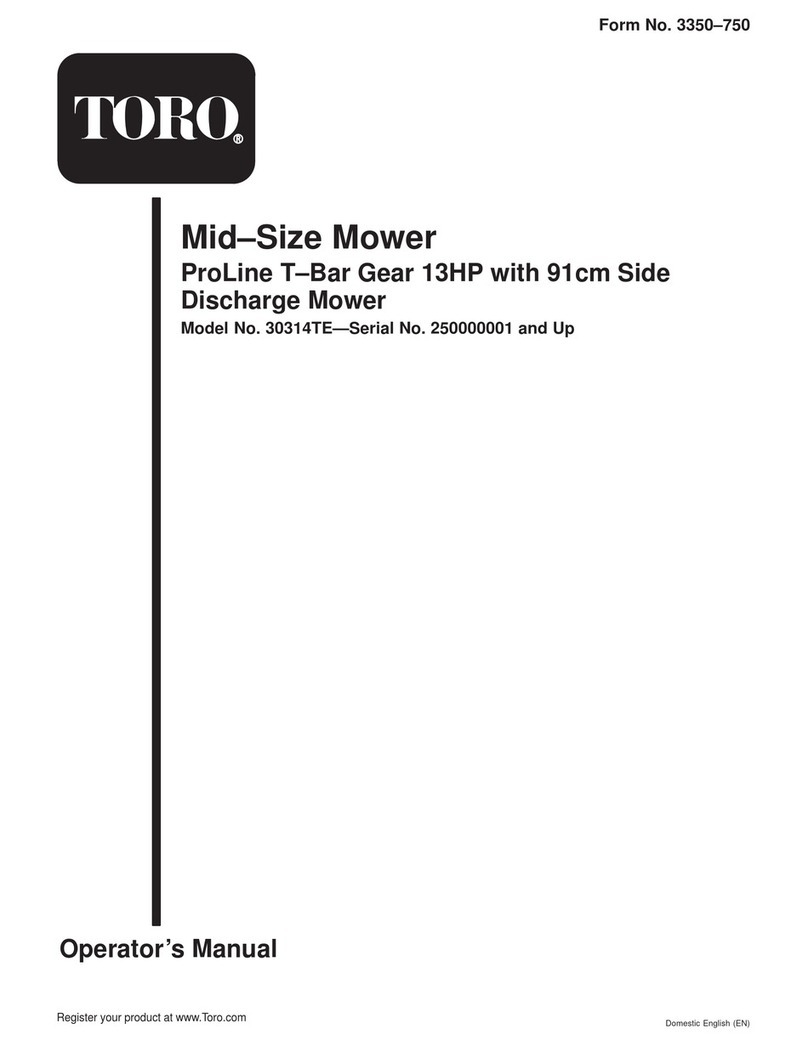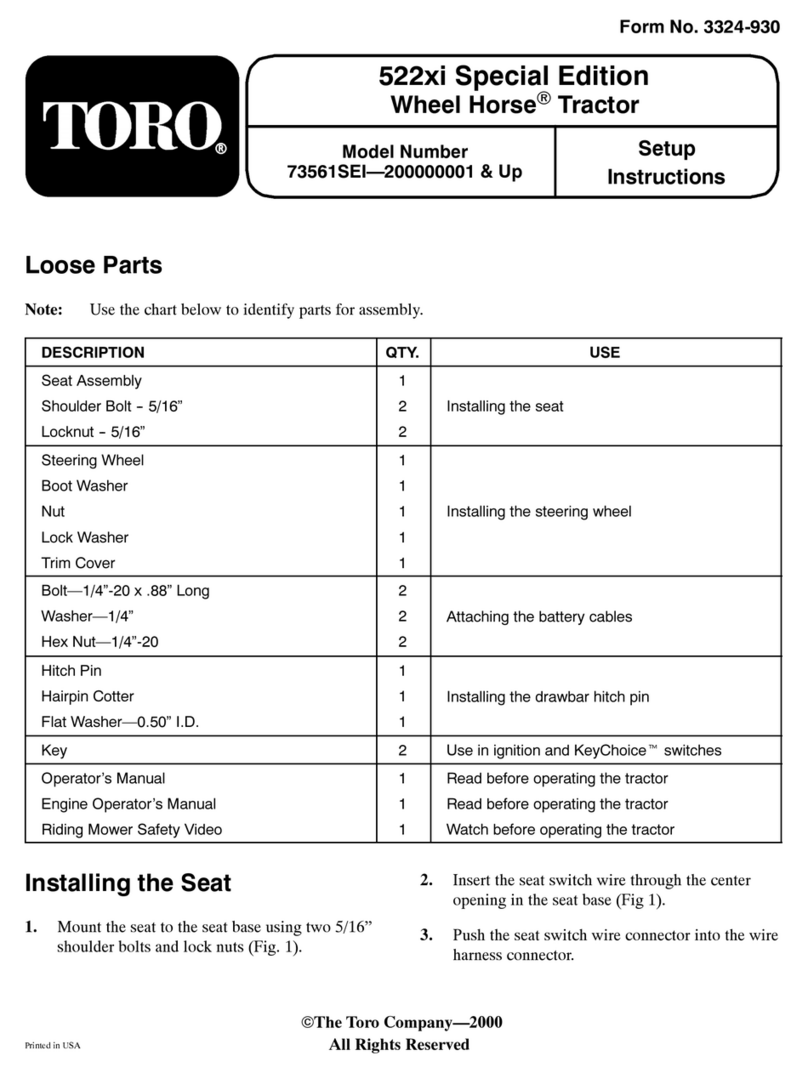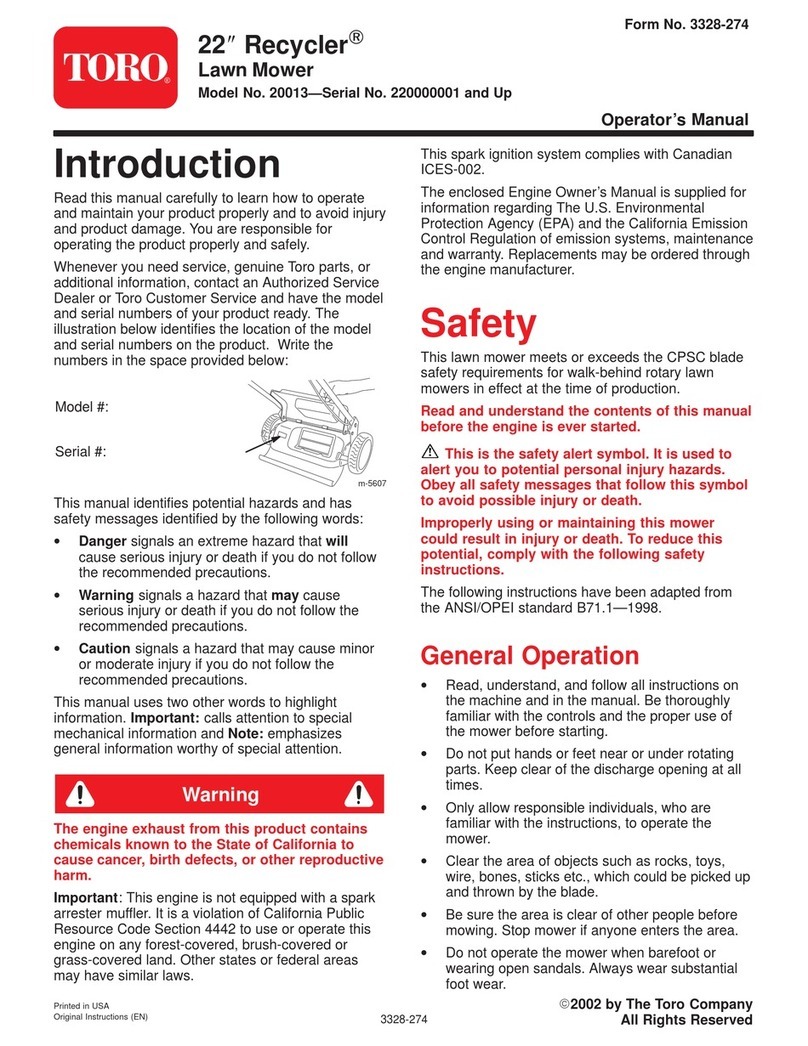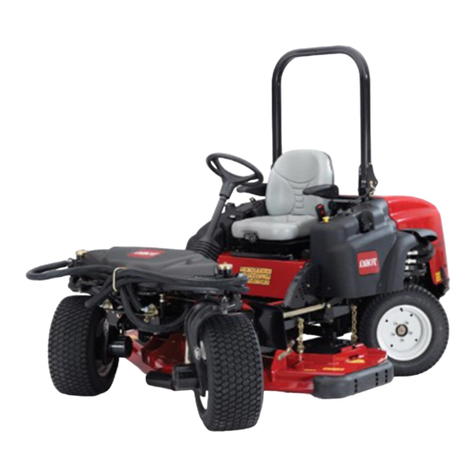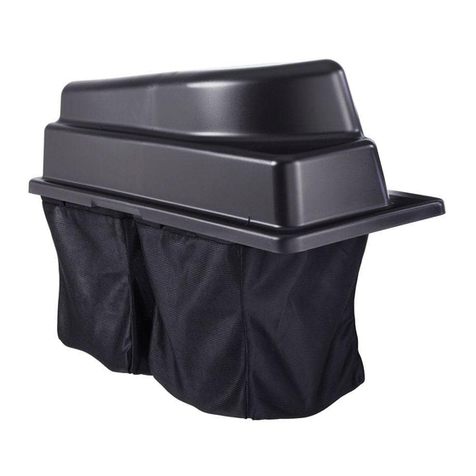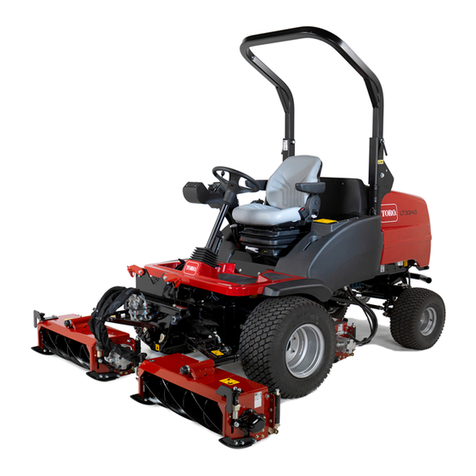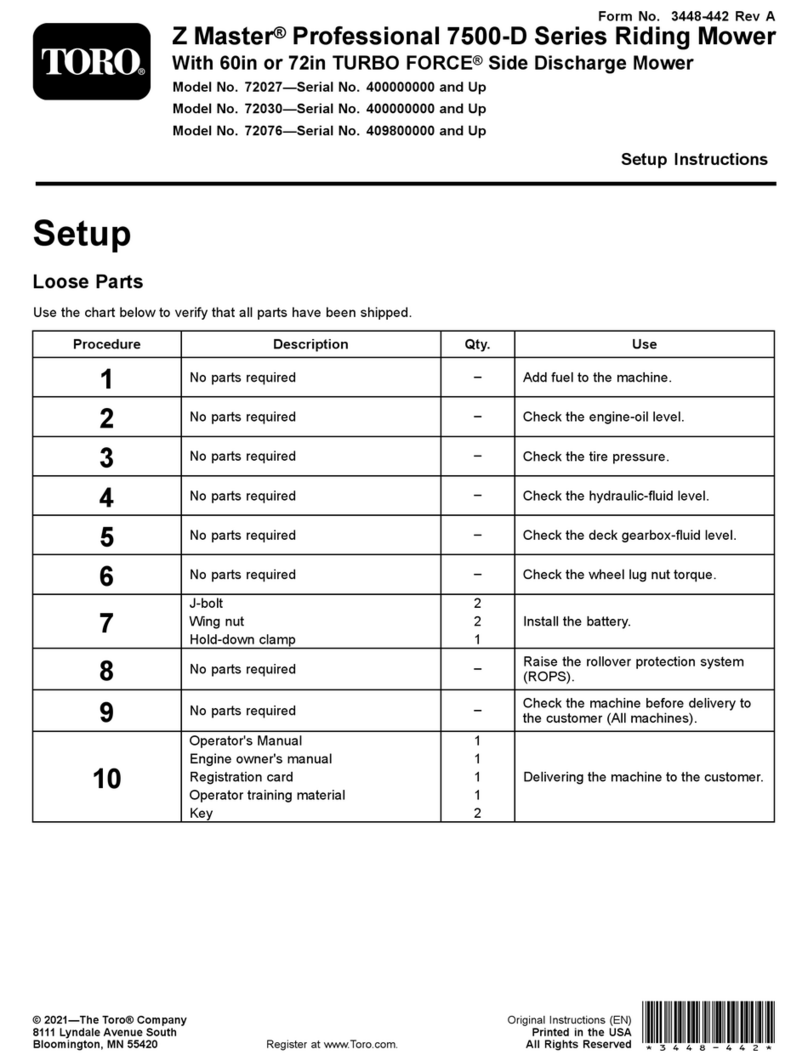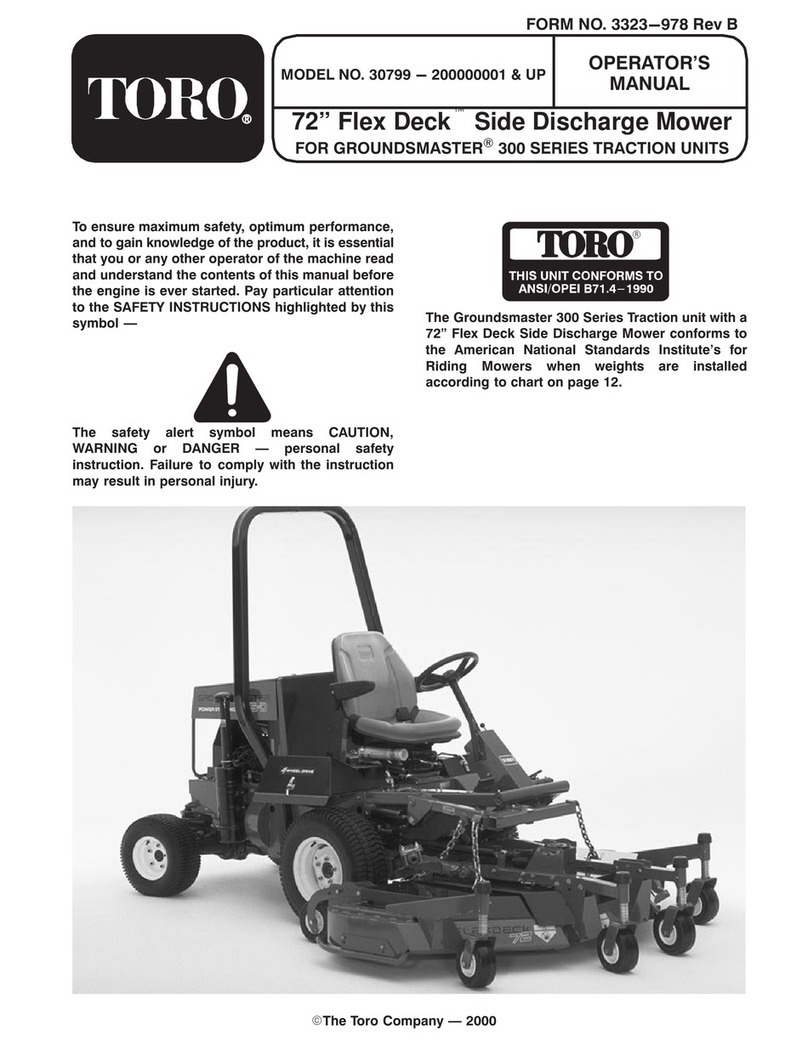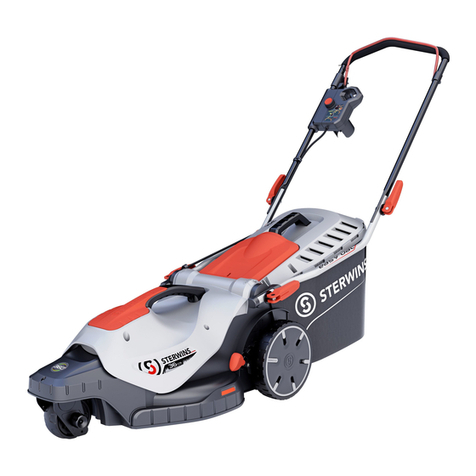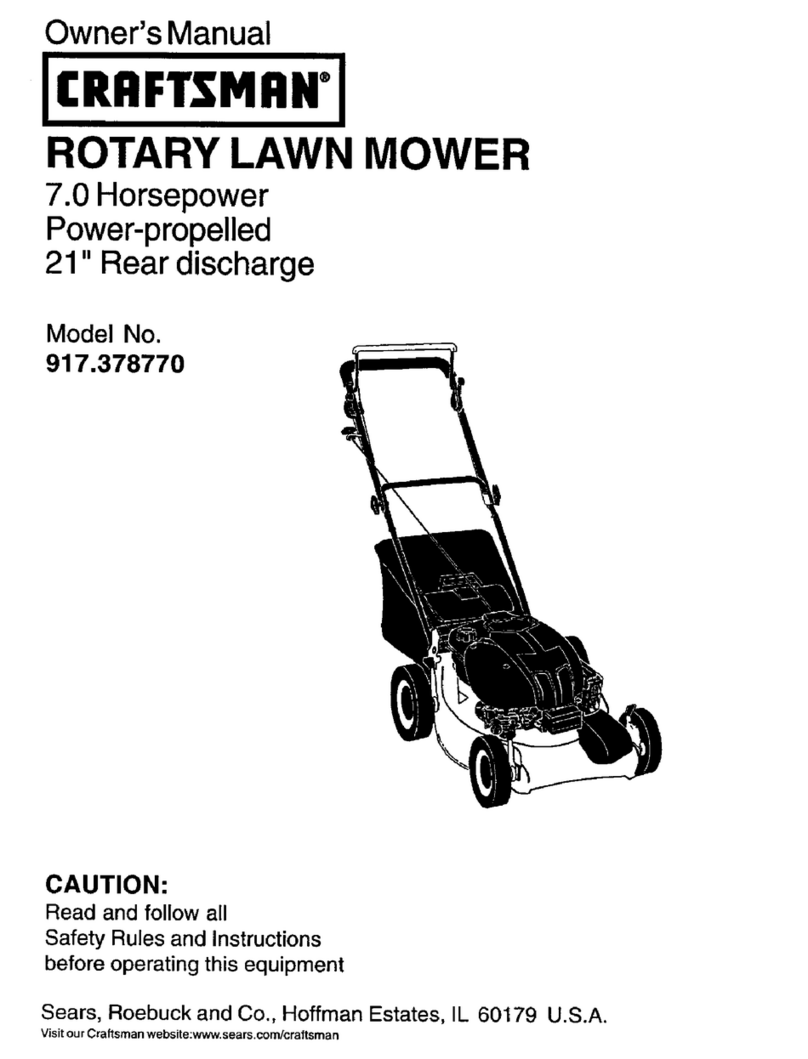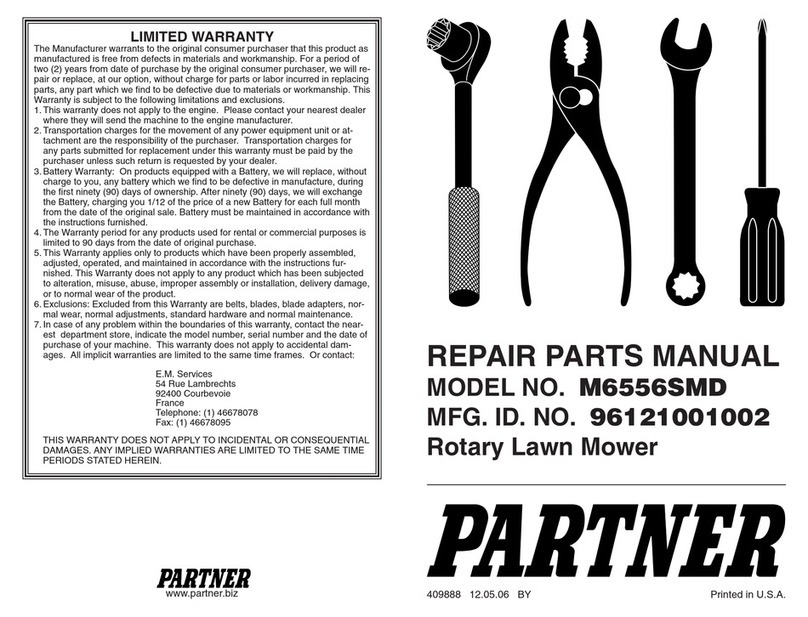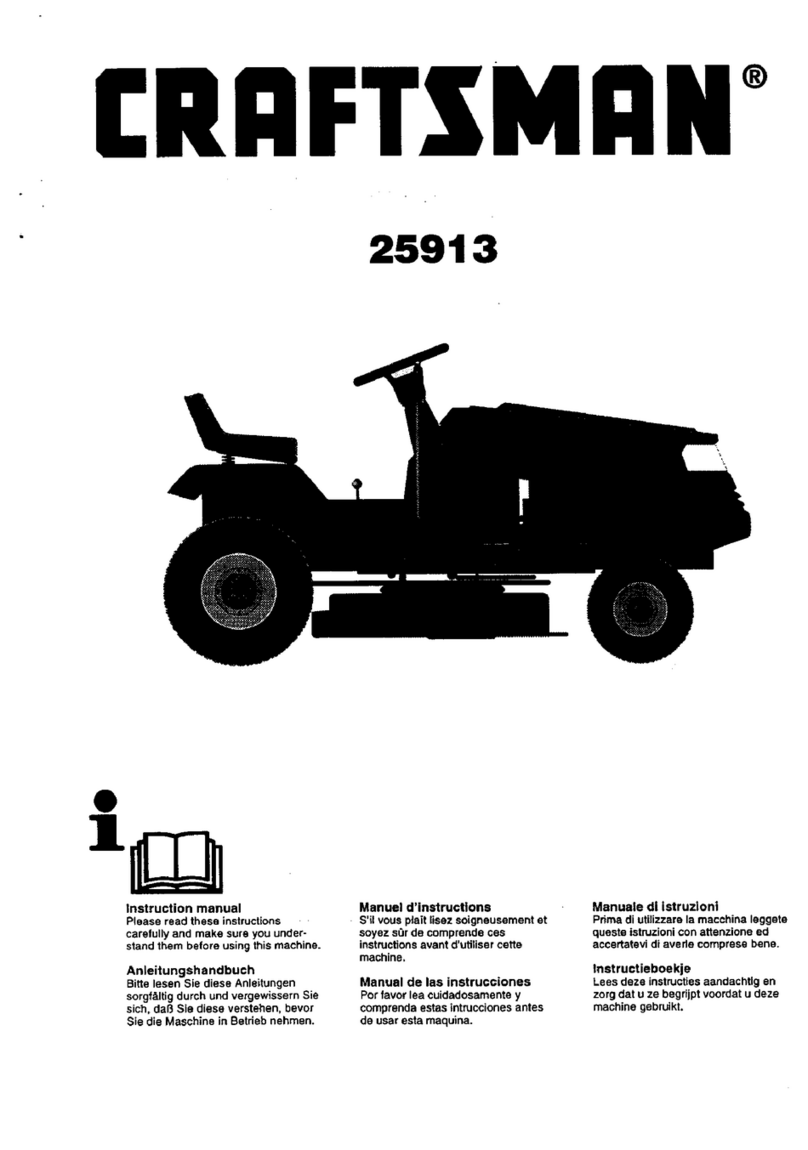
Engine: Perkins, 4-cycle, 3-cylinder, liquid-cooled,
vertical overhead valve, diesel engine with centrifugal
water pump. 13.4 kW governed to a maximum speed
of 3200 rpm. 676 cc displacement. Forced lubrication
gear pump. Mechanical centrifugal governor.
Mechanical fuel transfer pump. Fuel filter/water sepa-
rator with replaceable filter element. 12-volt (0.7 kW)
starter. Heavy-duty remote mounted air cleaner. Spin-
on oil
filter.
Radiator: Side-mounted radiator. Cooling system
capacity is 4.7 liters.
Electrical: 12-volt Group 55, 450 cold-cranking amps
at –18°, 75-minute reserve capacity at 27°C. 14-amp
alternator with regulator/rectifier. Seat switch, PTO
and traction interlock switches. Indicator light when
cutting units are running.
Fuel Capacity: 24.6 liters
Traction Drive: Three high-torque hydraulic wheel
motors. 3-wheel drive; two-position selector valve
located below the seat, push for 3-wheel drive and pull
for 2-wheel drive. Oil cooler and shuttle valve provide
positive closed-loop cooling.
Hydraulic Oil Capacity/Filter: Remote mounted, 8.7
liter oil reservoir. 25-micron remote-mounted spin-on
the filter.
Ground Speed: Infinitely variable speed selection in
forward and reverse
Mowing speed: 0–8 km/h
Transport speed: 0–13 km/h
Reverse speed: 0–3 km/h
Tires/Wheels: Two front traction tires, 20 x 10-8,
tubeless, 4-ply rating. Rear steering tire and tube: 20 x
8-8, 2-ply rating. Demountable front rims.
Recommended tire pressure 97–138 kPa front tires and
55–69 kPa rear tire.
Frame: The frame consists of formed steel, welded
steel and steel tubing components. Tricycle vehicle
with 3-wheel traction drive and rear wheel steering.
Steering: Pinion and sector gear with solid drag link
to rear steer wheel arm.
Brakes: Service braking through the dynamic charac-
teristics of the hydrostat. Parking or emergency brake
is actuated by a ratchet hand lever on the operator’s
left-hand side.
Controls: Foot-operated traction pedal and traction
pedal stop. Hand-operated throttle, ignition switch,
reel engagement switch, cold start button reel unit lift
lever, parking brake and seat adjustment, 2-position
selector valve for 2- or 3-wheel drive selection.
Gauges and Protective Systems: Hour meter, tem-
perature gauge, 4-light warning cluster gauge: oil pres-
sure, water temperature amps and glow plug. High
water temperature shutdown. Electric traction pump
declutching switch for cold start. Engine preheat
incorporated into the ignition switch.
Seat: Adjustable to operator weight, fore and aft, with
removable fold-up armrests.
Cutting Unit Lift: Hydraulic lift with an automatic
reel shut off.
Overall Dimensions:
Wheel tread width: 138
cm
Wheel base: 140
cm
Width: 194
cm
Length: 249
cm
Height: 112
cm
Weight: 562 kg with 5-blade cutting
unit 569 kg with 8-blade cutting
unit
9
Specifications
